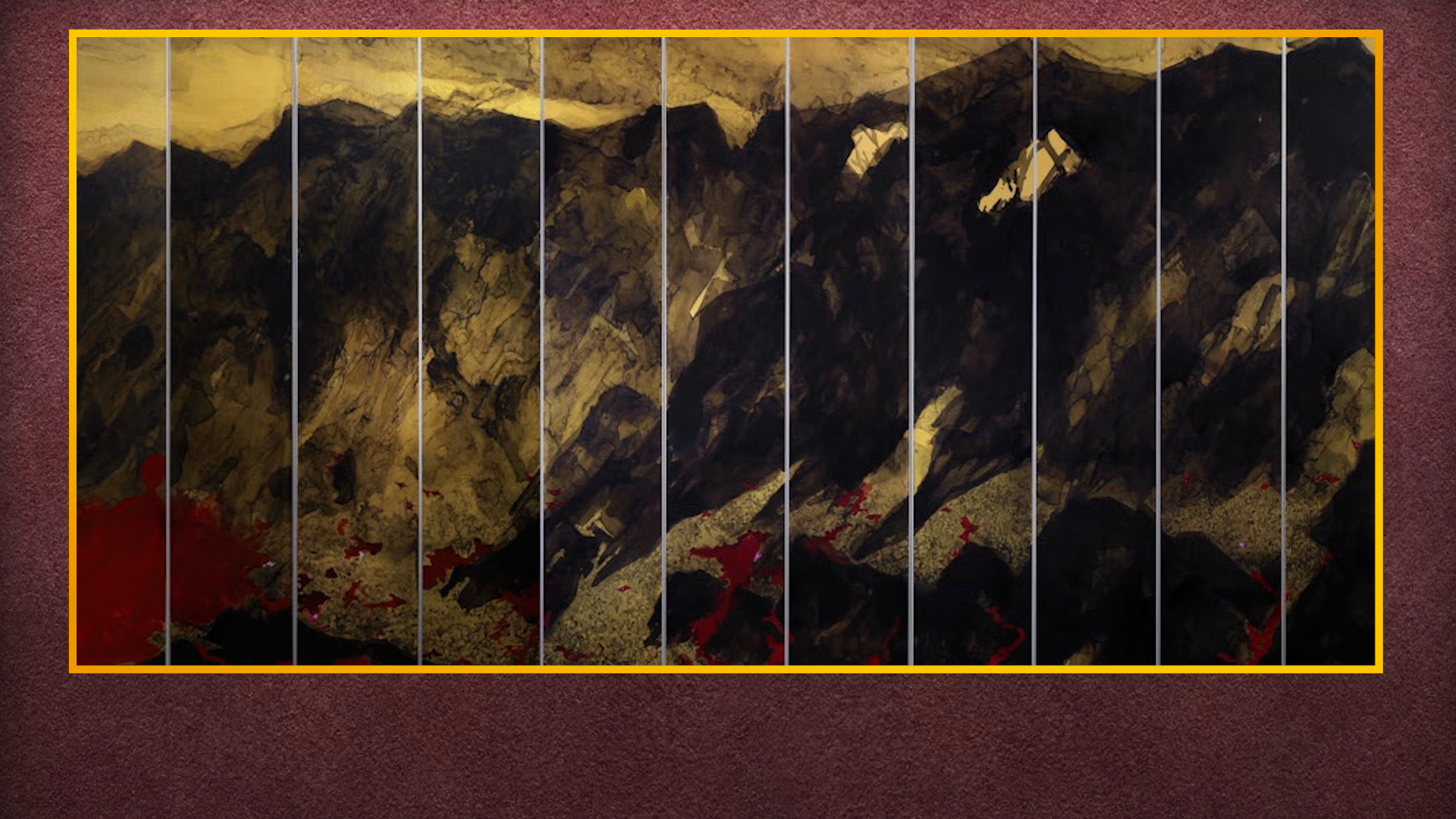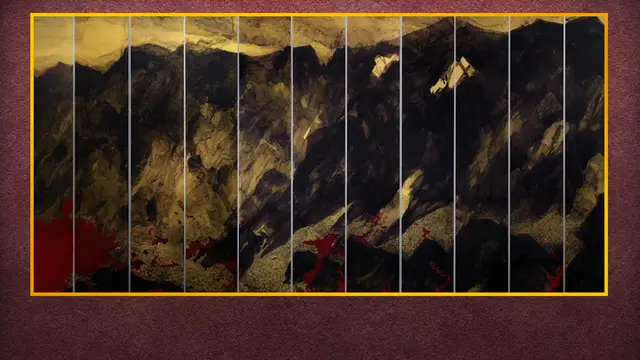02:26

Chinese Modern and Contemporary artist Li Jinkun created this 11-meter-long Chinese painting in 1991. The scroll is composed of 19 screens.
It depicts the fierce battle in Loushan Pass in 1935 between the Chinese Red Army led by the CPC and the Brigade of the Guizhou Army controlled by the Kuomintang (KMT).
The communist forces defeated the enemy and occupied the pass, which marked the first triumph since the start of the Red Army’s Long March in late 1934.
Back under Mao Zedong’s command at the Zunyi Conference in early 1935, the Red Army left Zunyi and headed north, planning to consolidate its forces and cross the Yangzi River.
KMT leader Chiang Kai-shek mobilized more than 400,000 troops to block the Red Army’s plan and attempted to wipe out communist forces.
Mao ordered the Red Army to go back to Zunyi City in southwest China’s Guizhou Province where the enemy’s defense was weaker.
At 1,500 meters above sea level, the Loushan Pass in the Dalou Mountains is a critical military fortress. It has steep cliffs on both sides.
The 13th regiment of the Red Army led by Peng Dehuai was assigned to attack the pass on February 25, 1935.
It went on a frontal attack and encircled the pass from the side. After repeated assaults starting early in morning, they broke through the enemy’s defense, and completely controlled the pass before dusk.
The Red Army captured more than 600 enemy soldiers in the battle and re-occupied Zunyi in three days.
This long-waited victory shattered the KMT’s plan to annihilate the Red Army and increased the confidence of the Red Army soldiers to win future battles.
Check out
The China Report
, our new weekly newsletter.Subscribe here!
 简体中文
简体中文

